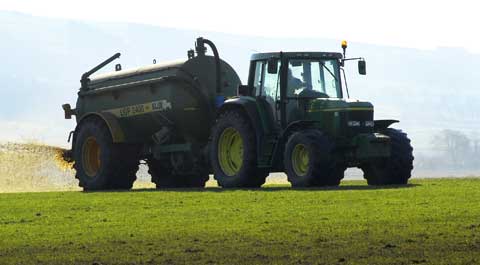Rebuilding a vacuum pump

This feature follows on from Restoring suck ‘n’ blow, here.
Vacuum tanker pumps are simple beasts, so the job is straightforward, yet there are still one or two things to watch.
• Don’t throw away the end cover gaskets in favour of silicone sealant.
Their thickness matters to bearing clearance; without gaskets the rotor will run tight and the pump will expire quickly.
• Pump chamber seals are paired and fitted back-to-back – see (1).
• One spacer ring goes behind the rotor drive gear, another between the oil pump and rotor support bearing.
• Use the right oils. Vacuum pump lube in the main reservoir, EP 80/90 in the drive-end gearbox.
• Give new vanes a generous coat of vacuum pump oil before fitting.
• Once the pump is back in service, use the oiler’s needle valve and sight glass to set flow at one drop every two seconds.

1 Start with new seals for the gearbox’s rotor support bearing. These separate the gearbox and rotor chamber. Two are used, fitted back-to-back with their flat, normally outer faces together.

2 Drift the rotor support bearing home with a soft brass bar, then give it a squirt of vacuum pump oil.

3 With the rotor on the bench, fit the gearbox housing by driving the bearing over the rotor shaft. Again, with all the bearings, use the brass bar.

4 Slip the small spacer ring over the rotor shaft. Add the new drive key, sliding it in with grease if necessary. Then add the drive gear, shouldered end first, as here. Tap the gear home; it should seat fairly easily. If not, check that the key is still properly in its slot.

5 No tightening torque is specified for the drive gear nut. Just make sure it doesn’t come undone.

6 Use dabs of grease to stick a new gasket to the pump body. Then slide the rotor back into its housing, minding your fingers. Fit one side bolt first, then lift and rotate the gearbox upwards so that its flange seats properly and the other bolt holes line up. Do up the holding bolts; don’t miss the lower two inside the housing.

7 Give each new vane a generous coat of vacuum pump oil, not forgetting the tips. Then slip it into the rotor.

8 The oil pump-end cover takes two new seals, again fitted back-to-back as in the gearbox casing (see 1).

9 Add a new gasket to the rotor chamber, then drift the oil pump-end cover into place and bolt it up.

10 Before you go any further, ensure the pump turns freely. It may stick at first if vanes are not square in their slots. Investigate persistent binding. Drop the slotted oil pump drive back into place…

11 followed by the large spacer ring and circlip.

12 Add a new gasket, line up the pump’s drive tang with the slotted plate and settle the pump into place. If it won’t go, check alignment and try again. When all is well, bolt down the pump. Rotate the pump using grips on the pto shaft; once started it should turn over freely. Re-connect the flexible oil pipes.

13 EP 80/90 oil goes in the gearbox to sight glass level (arrow). Don’t overfill as this will blow oil seals.

14 The saddle tank over the rotor casing takes about 5 litres of vacuum pump oil. Fill it to the dipstick mark or to the brim, whichever you prefer.

15 the diverter valve on top of the pump seldomly gives trouble; ditto the non-return ball valve. Under the housing you’ll find the tapered valve (1), which is held in its seat by a spring (2). The valve shaft has a seal (3) where it passes through the housing (4). The spring and seal need to be in good order. The same goes for the handle’s two stop lugs (5); if one breaks, the operator can accidentally park the valve in a position where the pump’s inlet and outlet are connected. Result, little or no suck or blow.

